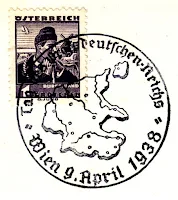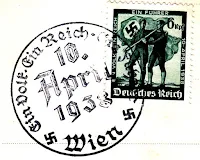The word Anschluss is properly translated as "joinder," "connection," "unification," or "political union." In contrast, the German word Annektierung (military annexation) was not, and is not commonly used now, to describe the union of Austria and Germany in 1938. The word Anschluss had been widespread before 1938 describing an incorporation of Austria into Germany. Calling the incorporation of Austria into Germany an "Anschluss," that is a "unification" or "joinder," was also part of the propaganda used in 1938 by Nazi Germany to create the impression that the union was not coerced.
Nazi Germany's agents cultivated pro-unification tendencies in Austria, and sought to undermine the Austrian government, which was controlled by the Austrofascist Fatherland Front. During an attempted coup in 1934, Austrian chancellor Engelbert Dollfuss was assassinated by Austrian Nazis. The defeat of the coup prompted many leading Austrian Nazis to go into exile in Germany, where they continued their efforts for unification of the two countries.
In early 1938, under increasing pressure from pro-unification activists, Austrian chancellor Kurt Schuschnigg announced that there would be a referendum on a possible union with Germany versus maintaining Austria's sovereignty to be held on 13 March. Portraying this as defying the popular will in Austria and Germany, Hitler threatened an invasion and secretly pressured Schuschnigg to resign. A day before the planned referendum, on 12 March, the German Heer crossed the border into Austria, unopposed by the Austrian military. A plebiscite was held on the 10th of April, in which the ballot was not secret, and threats and coercion were employed to manipulate the vote, resulting in 99.7% approval for the Anschluss.
Disclaimer: In displaying this postcard and stamps I must stress I DO NOT advocate, NOR wish to glorify the regime of Nazi Germany or any present day fascist organisation/state. My sole intent is to illustrate the philatelic history of the period, one which I personally believe to have been evil and as such a plight in the history of Germany and their satellite allies at the time.
Source: Wikipedia




No comments:
Post a Comment